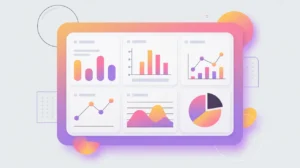Importance of Datasheets for Datasets
Datasheets for Datasets are structured documentation that describe the motivation, composition, collection methods, and intended uses of datasets. They serve as transparency tools that help practitioners understand the origins, limitations, and potential biases in the data they use to train AI models. Their importance today lies in the recognition that biased or incomplete data often leads to biased AI outcomes, and datasets are too often used without adequate scrutiny.
For social innovation and international development, datasheets matter because mission-driven organizations often rely on sensitive data from vulnerable communities. Proper documentation ensures that data is used responsibly, minimizing risks of exclusion, harm, or misuse.
Definition and Key Features
The concept of datasheets for datasets was proposed in 2018 by researchers at Microsoft, inspired by product datasheets in electronics. A datasheet typically includes details about how data was collected, who collected it, what populations are represented or excluded, data preprocessing steps, licensing terms, and ethical considerations.
They are not the same as metadata, which provides technical descriptors but lacks ethical or contextual framing. Nor are they equivalent to data catalogs alone, which organize access but do not disclose risks or limitations. Datasheets emphasize social, ethical, and contextual accountability.
How this Works in Practice
In practice, a dataset used for training an AI health diagnostic tool might include a datasheet noting that most images came from hospitals in high-income countries, with limited representation from low-resource settings. This information signals potential risks in applying the model globally. Similarly, datasheets for education data could describe how test scores were collected, what age ranges were covered, and whether consent was obtained.
Challenges include the time and resources needed to prepare datasheets, resistance from organizations that view documentation as burdensome, and the difficulty of standardizing across diverse data types. However, the benefits in terms of transparency and accountability often outweigh the costs.
Implications for Social Innovators
Datasheets for datasets strengthen trust and responsibility in mission-driven contexts. Health programs can use them to evaluate whether diagnostic models are safe for diverse patient groups. Education initiatives can assess whether learning datasets reflect linguistic and cultural diversity. Humanitarian agencies can demand datasheets for population or crisis data to ensure responsible use. Civil society groups can leverage datasheets to hold organizations accountable for ethical data practices.
By making the invisible visible, datasheets for datasets help organizations understand the origins and limitations of their data, enabling more equitable, transparent, and responsible AI.







